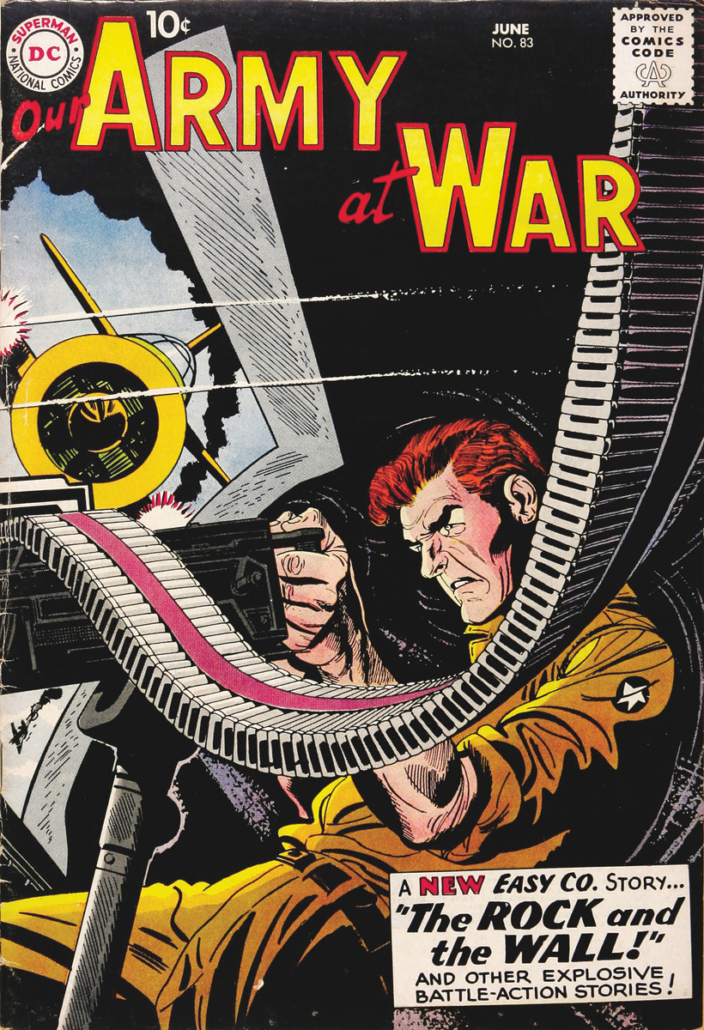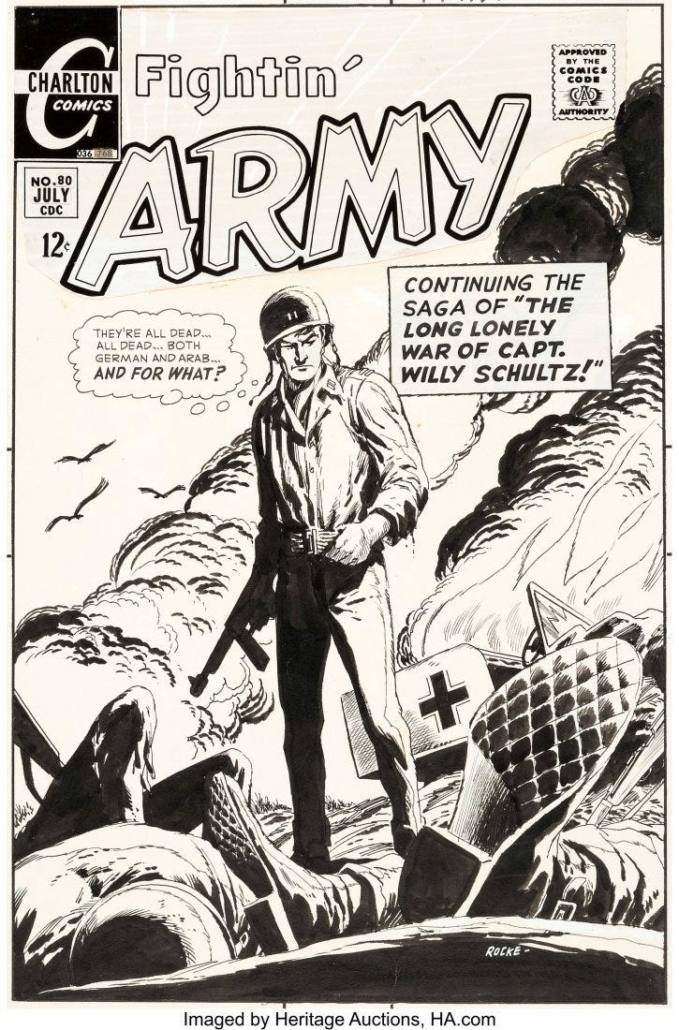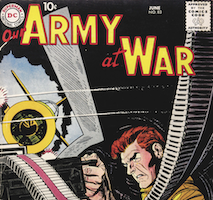
NEW YORK — The term “war comics” makes sense from a shorthand perspective; it’s a succinct way to describe this genre, but can be a tad misleading to outsiders. Far from glorifying war, war comics mostly tell unflinching and gritty stories of the cost of war, particularly the human cost. Some may have been borne out of patriotism and some out of anti-war sentiment but their common denominators are a keen attention to detail and realism, amazing art, and inventive storytelling.
When it comes to what defines a war comic, most collectors ignore those that blend genres, particularly fantasy, to focus on true war comics. “One of the things we look at is is it just a blending of genres: a superhero comic that has a war component to it or a war comic that has a superhero character in it,” said J.C. Vaughn, vice-president of publishing for Gemstone Publishing, home of The Overstreet Comic Book Price Guide and an annual war comics guide, War Report. When defining a war comic broadly, they check if it represents actual war or elements that one would associate with war and its effect on people. Purist collectors favor comics that are explicitly warlike in terms of war’s impact on participants and the civilian population, without regard to whether the setting is entirely fictional or a fictional recreation of a real war event.

In the world of comics, war comics mostly remain a collecting niche, but over the years it has grown a devoted and loyal audience for whom the storytelling and art resonate. Leading war comics include All American Men of War, G.I. Combat, Our Army at War, Our Fighting Forces and Star Spangled War Stories. Mega-publishers Marvel and DC produced war comics, but there are notable issues and beloved war characters put out by indie publishers like Charlton, Atlas, and Entertaining Comics (EC Comics).

Among the highly collectible and beloved artists of this genre are Russ Heath, Joe Kubert, Harvey Kurtzman and others. Wayne Vansant was known for Marvel’s critically important Vietnam War comic book series, The Nam, and EC artist George Evans was noted for his skill at drawing aerial battles.
“There are lots of guys that can draw a beautiful panel or a beautiful cover, but to make the story flow is the real talent for comic book interiors,” Vaughn said. “I was not a DC Comics fan as a kid and yet their war comics … they really concentrated on the storytelling.” War comics don’t have some guy with a cape flying in and saving the day. Instead, they featured everyday people that became favorite characters, such as Sgt. Rock.

War comics often have cross-collecting appeal. Fans of a particular artist might check out that person’s other work and stumble across war comics. Frank Frazetta’s illustration work is legendary, and he is well known for his science fiction images, such as his Buck Rogers covers. But he also did the cover of Blazing Combat #2, a short-lived but influential war comic series. “With a lot of major artists, you may have been a fan of their superhero titles and see they’re working on a war-related book and maybe you pick that up,” said Alex Winter, president of Hake’s Auctions in York, Pennsylvania. “So many great people have worked on them that maybe the casual comic book fan isn’t aware of some of those titles, but once you get into it, you certainly appreciate what was done by some of the legends.”
While war comics continue to be made, early high-grade examples from the post-Golden, Silver, and Bronze Age periods, especially the 1940s to the 1950s, are most valuable owing to supply and demand. “Collect what you love and you’ll never go wrong but, yes, in terms of where the perceived monetary value at present, and has been for a sustained period, is the older material,” Vaughn said. “It’s really scarcity and grade that’s going to determine availability, and that’s going to determine the price. The older stuff particularly in grade is the hardest stuff to get.”

Enthusiasts tend to collect war comics with the same strategies used for other comics: by publisher, artist, and character, but war comics contain so many specific subgenres, such as battle tales and aviation, as well as eras, such as World War I or the Civil War.
Vaughn talked about their creators’ dedication to detailing the human cost of war in these comics and the power in telling human stories, explaining that even patriotic comics don’t gloss over the toll war enacts. As context, he noted that he grew up in a pro-military household with several family members who served in the military. “My favorite war comics actually are anti-war comics. A creator named Harvey Kurtzman did some war comics at EC in the 1950s and they were not poorly constructed sermons, as are the feeble attempts to do political comics these days,” he said. “They never forgot they had to tell a story first. They were all about the human cost of war and they are powerful, gripping, and incredibly well done with a wide variety of artists, including Kurtzman himself.”
# # #


